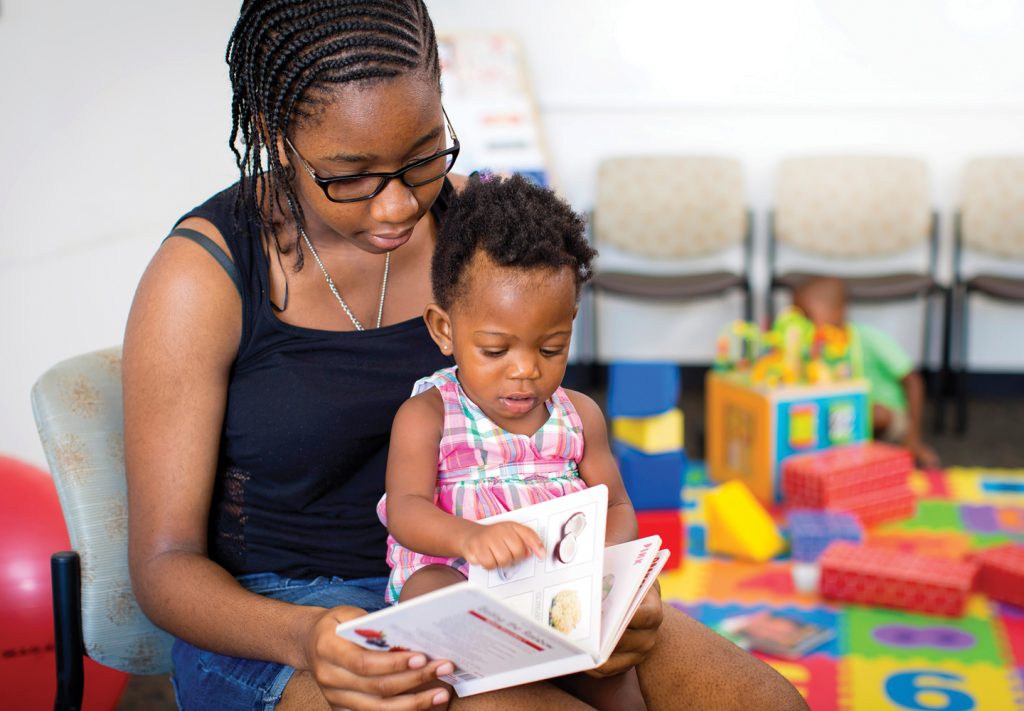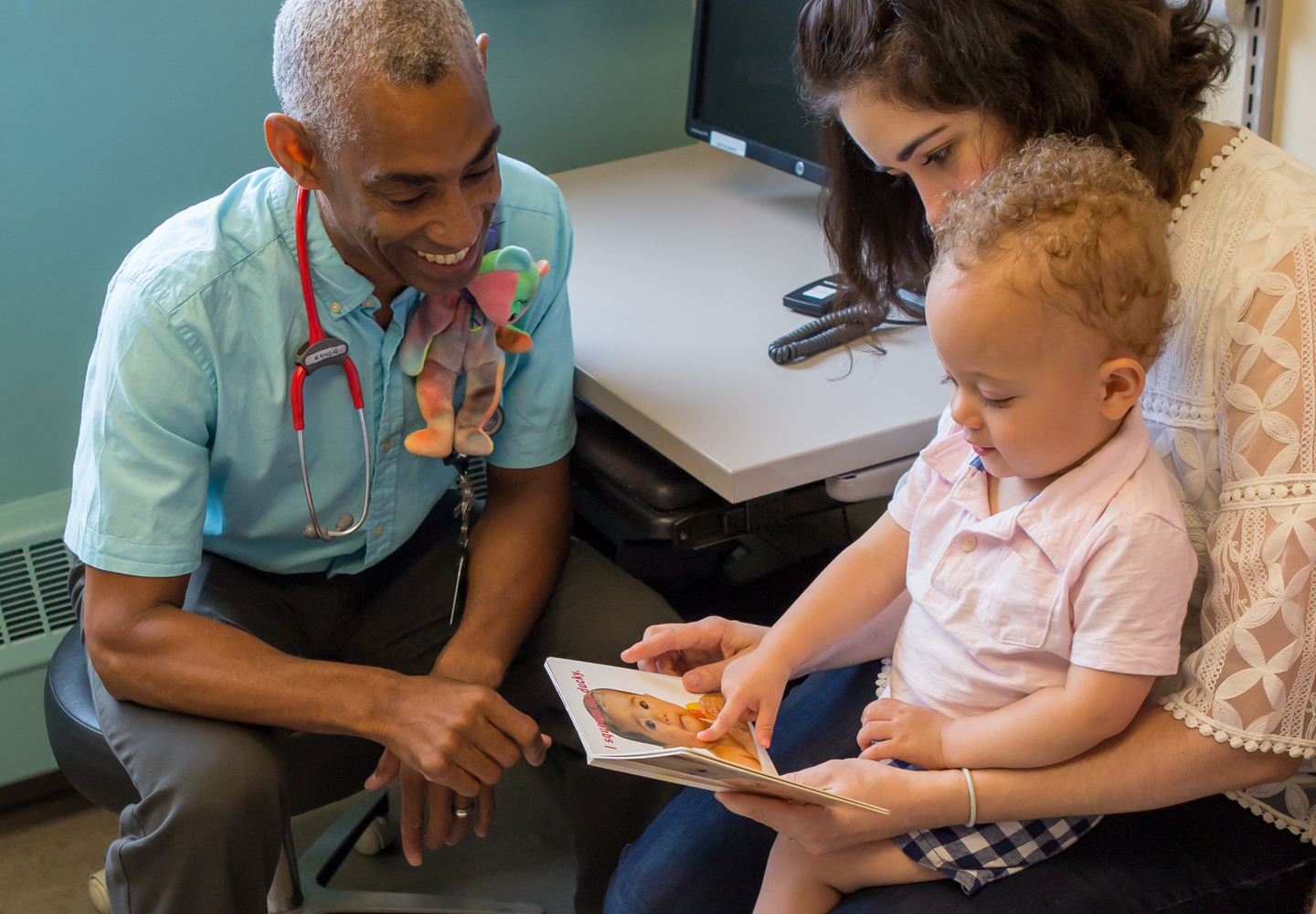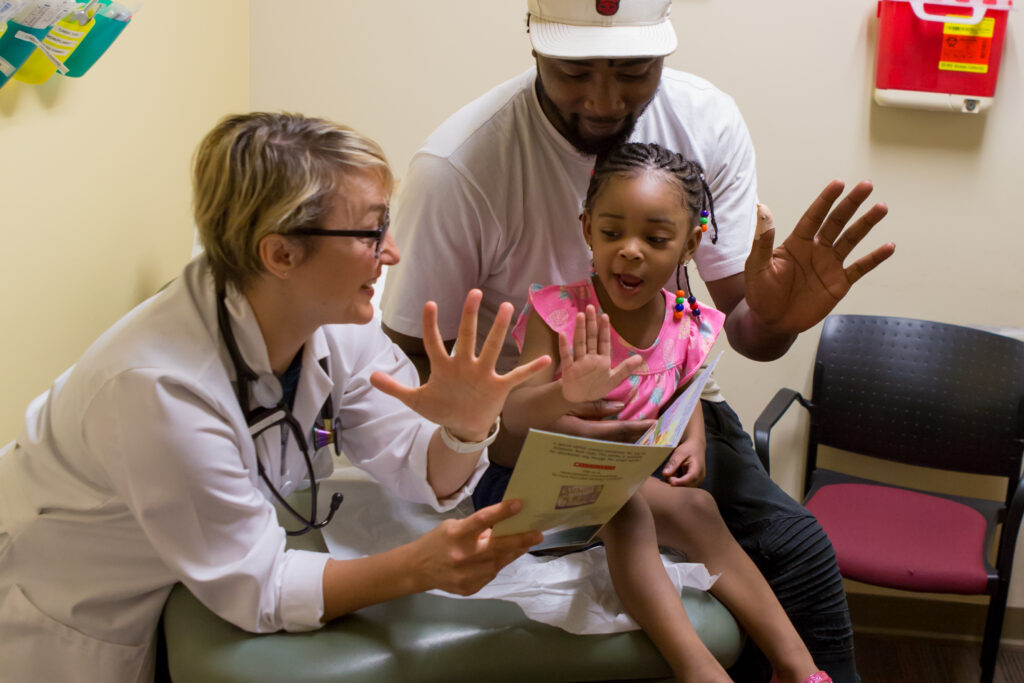Tried and True
Reach Out and Read is built on and backed by science.
Reach Out and Read’s effectiveness is consistently supported by independent, peer-reviewed research. Studies show that our model has a significant effect on parental behavior and attitudes toward reading aloud and that children who participate in our program demonstrate higher language scores. Our impact has been documented in ethnically and economically diverse families throughout the nation.






